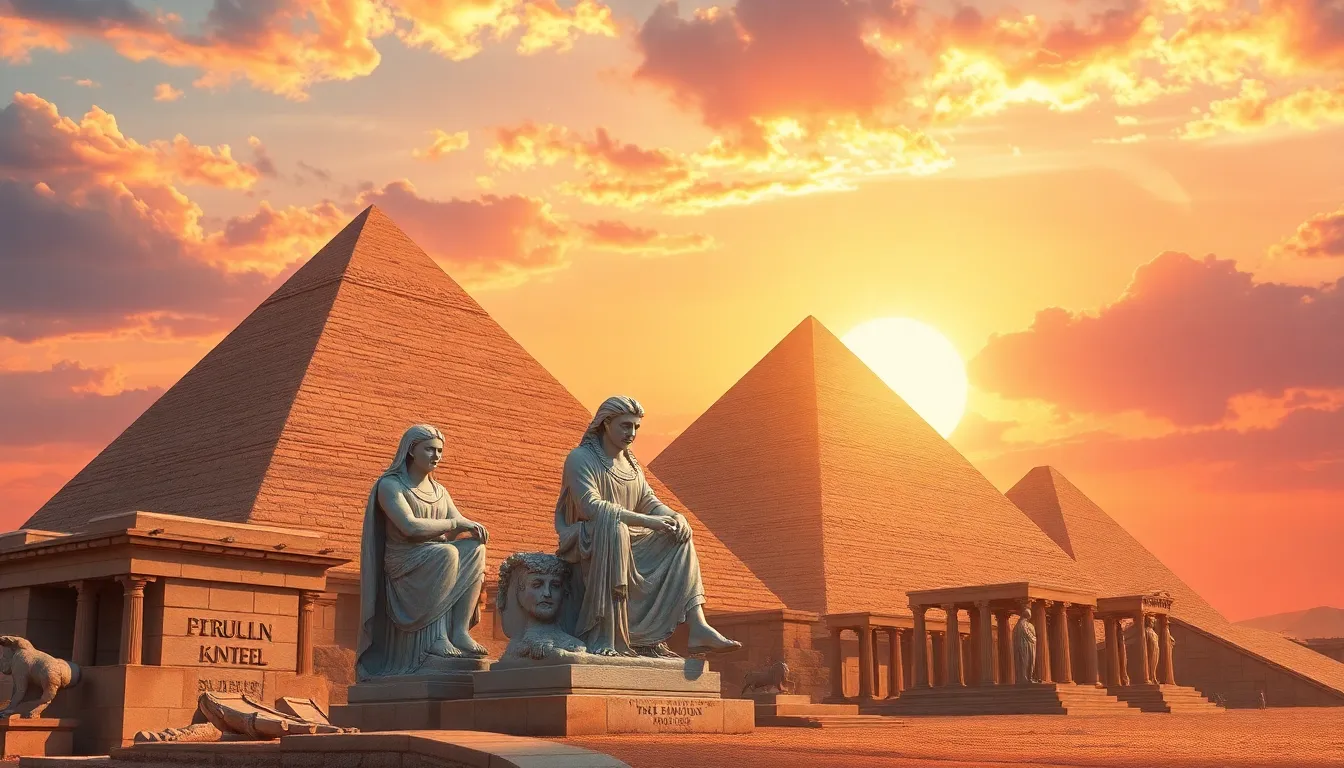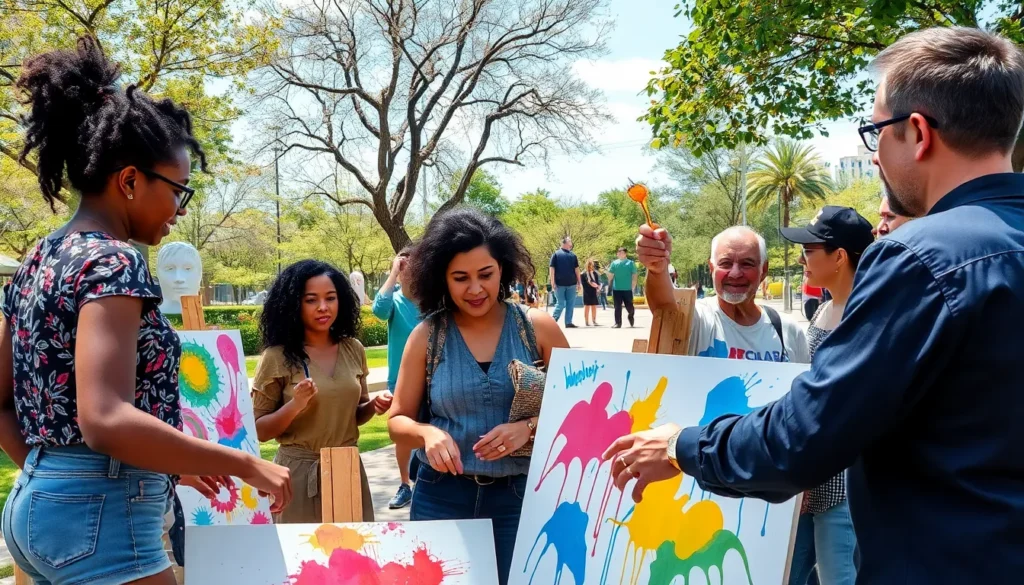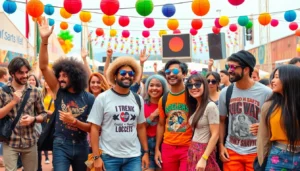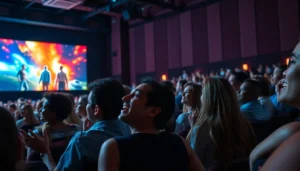Table of Contents
ToggleArtistic achievements have a way of capturing the imagination and leaving a lasting impact. From the brushstrokes of Van Gogh to the melodies of Beethoven, these accomplishments not only reflect the genius of their creators but also shape culture and inspire generations. They remind us that creativity knows no bounds and that art can be both a mirror and a window into the human experience.
Overview of Artistic Achievements
Artistic achievements encompass milestones in various art forms, including visual arts, music, literature, and performance. Each domain contributes uniquely to cultural landscapes. Notably, visual artists like Van Gogh brought innovative techniques, creating emotional resonance in their works. Their paintings continue to captivate audiences, fostering appreciation for the beauty of expression.
In music, composers such as Beethoven set new standards. His compositions, often defined by their emotional depth and complexity, shaped classical music’s evolution. They inspire musicians and listeners alike, reinforcing the timeless value of creative expression.
Literary achievements also mark significant contributions to society. Authors like Shakespeare and Maya Angelou crafted narratives that explore the human condition, provoking thought and reflection. Through their words, they connect with readers across generations, demonstrating literature’s ability to transcend time.
Theater and performance arts showcase another dimension of achievement. Playwrights and performers create immersive experiences that invite audiences to engage emotionally with stories. Each production holds the potential to challenge perceptions and spark conversations.
Artistic achievements reflect society’s values and challenges. As creativity expands, the boundaries of expression continue to blur. This evolution illustrates art’s role as both a mirror and a vehicle for change.
These remarkable works inspire individuals, fostering a deeper understanding of oneself and others. Collective achievements in art serve as a testament to humanity’s ongoing quest for meaning and connection. By celebrating these achievements, society acknowledges the vital contributions of artists to cultural heritage.
Historical Context of Artistic Achievements

Artistic achievements across history reveal the evolving relationship between creativity and society. Each period showcases its unique contributions and influences.
Ancient Civilizations
Ancient civilizations laid the groundwork for artistic expression. Cultures such as the Egyptians, Greeks, and Mesopotamians produced monumental works, including pyramids and temples, which demonstrated architectural prowess. In addition, pottery and sculpture from these societies often depicted daily life and religious beliefs, providing insight into their values. The Greeks introduced concepts of realism and proportion in art, influencing generations of creators. Additionally, ancient literature, including epics like “The Iliad,” showcased storytelling’s power in shaping cultural identity.
Renaissance Period
The Renaissance marked a significant turning point in artistic achievements. Artists such as Leonardo da Vinci and Michelangelo brought forth a renewed interest in humanism, emphasizing the beauty of the human form and nature. Innovations like linear perspective transformed visual art, allowing for more realistic representations. In literature, figures like Dante and Petrarch enriched storytelling with profound themes of love and morality. Additionally, this era’s attention to science and exploration fueled creativity, leading to groundbreaking advancements in various art forms. The Renaissance not only celebrated individual genius but also redefined the role of the artist in society.
Key Figures in Artistic Achievements
Artistic achievements trace back through centuries, reflecting both innovation and cultural evolution. Key figures have shaped this landscape, influencing not only their peers but generations thereafter.
Influential Artists
Van Gogh’s expressive brushwork revolutionized visual art, portraying intense emotion. Frida Kahlo’s self-portraits candidly explored identity, pain, and culture. Their unique styles resonate deeply, inspiring countless contemporary artists. Beethoven redefined classical music with symphonies that convey profound human experiences. Shakespeare’s eloquent narratives transformed literature, capturing the complexities of the human condition. Each of these artists carved a legacy, demonstrating the power of creativity to transcend time and connect people.
Pioneers in Art Movements
Impressionism emerged with Claude Monet, challenging traditional techniques by capturing light and movement. Abstract Expressionism found a voice through Jackson Pollock, whose works emphasized spontaneity and emotional intensity. Surrealism broke conventional boundaries, led by Salvador Dalí, exploring the subconscious mind. The Harlem Renaissance highlighted African American culture through artists like Langston Hughes and Zora Neale Hurston, fostering rich discussions on race and identity. These pioneers laid the groundwork for future movements, ultimately broadening the scope of artistic expression.
Different Forms of Artistic Achievements
Artistic achievements manifest in various forms, each reflecting unique cultural and emotional experiences.
Visual Arts
Visual arts encompass a broad spectrum of mediums, including painting, sculpture, and photography. Renowned artists such as Van Gogh and Picasso pushed boundaries with innovative techniques and expressive styles. The emotional depth captured in works like “Starry Night” resonates despite temporal changes in society. Additionally, contemporary artists like Banksy utilize street art to inspire social change, sparking conversations on pressing issues. Visual arts not only offer aesthetic pleasure but also encourage critical reflection on cultural narratives.
Performing Arts
Performing arts include theater, dance, and music, serving as dynamic avenues for storytelling. The emotional intensity of performances by iconic figures such as Shakespeare in theater or Martha Graham in dance captivates audiences worldwide. Composers like Beethoven revolutionized music through symphonies that depict human emotions profoundly. Festivals and live performances create shared experiences, connecting individuals across diverse backgrounds. These art forms challenge perceptions and spark dialogue, making them integral to cultural identity.
Literary Arts
Literary arts encompass poetry, novels, and essays, reflecting the human experience in written form. Iconic writers such as Shakespeare and Maya Angelou articulate complex themes of identity and resilience. Through compelling narratives, they connect generations and inspire change. Poetry, too, serves as a powerful medium for self-expression and activism, with poets like Langston Hughes addressing social justice. Literature cultivates empathy and understanding, encouraging readers to explore different perspectives and fostering deeper cultural connections.
Contemporary Artistic Achievements
Contemporary artistic achievements encompass a wide range of disciplines that reflect modern society’s complexities. Visual artists like Yayoi Kusama utilize immersive installations to engage audiences in conversations about mental health and self-identity. Musicians such as Beyoncé challenge social norms through powerful lyrics and innovative performances, often addressing themes of empowerment and race.
Street artists like Banksy push the envelope by creating thought-provoking works that critique political and social issues, making art accessible to the public. Theater companies such as The Public Theater produce works that highlight contemporary societal challenges, offering platforms for underrepresented voices. In literature, authors like Chimamanda Ngozi Adichie craft narratives that explore cultural identity and gender, contributing to global conversations on social justice.
Multimedia artists incorporate technology into their creations, merging traditional art with digital formats to reach diverse audiences. Fashion designers like Virgil Abloh capitalize on art’s influence within popular culture, elevating streetwear to high fashion. Collaborative projects between artists from various disciplines foster dialogue and innovation, further enriching the cultural landscape.
Art festivals, such as Burning Man, celebrate creativity in unconventional formats, encouraging participation and communal engagement. Current artistic landscapes highlight the intersection of art and activism, as creators address environmental crises, inequality, and systemic oppression. Collectively, these contemporary artistic achievements play a crucial role in shaping societal values and inspiring future generations.
Artistic achievements are essential to the cultural fabric of society. They not only reflect the complexities of human experience but also inspire change and foster connections among individuals. By embracing creativity across various disciplines, artists challenge perceptions and encourage dialogue on pressing issues.
These contributions highlight the transformative power of art, serving as a vehicle for understanding and empathy. As society continues to evolve, the legacy of artistic achievements will undoubtedly inspire future generations to explore their own creativity and engage with the world around them. Celebrating these milestones ensures that the impact of art remains a vital part of humanity’s ongoing journey.







